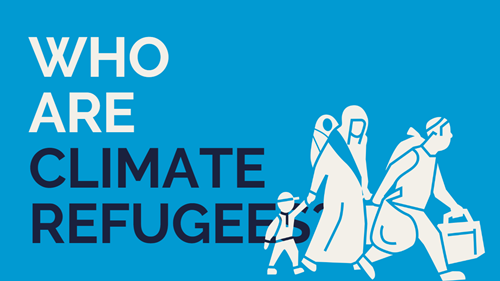Climate refugees are people who are forced to leave their homes and communities due to adverse impacts of climate change and global warming.
―
Who are Climate Refugees?
―
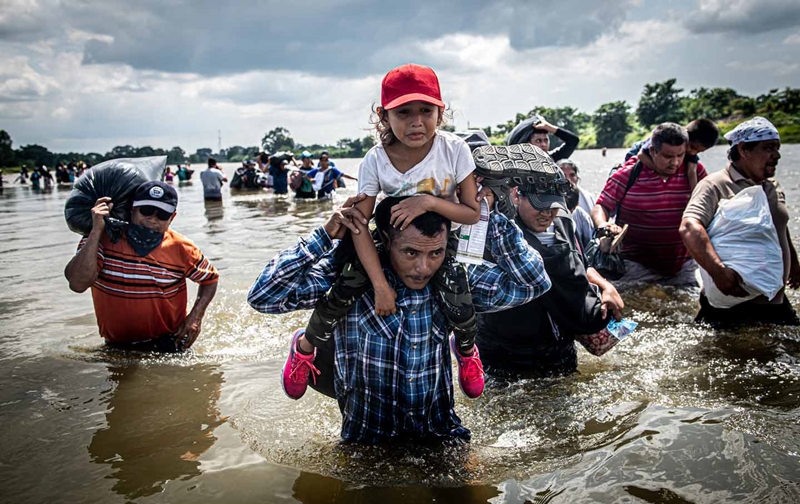
(Picture: The Nation)
A. Climate refugees are people who are forced to leave their homes and communities due to adverse impacts of climate change and global warming.
The concept of climate refugees has gained widespread recognition since 1985 following the definition provided by Essam El-Hinnawi, an expert from the UN Environment Programme (UNEP), El-Hinnawi defined “environmental refugees” as those “who have been forced to leave their traditional habitat, temporarily or permanently, because of a marked environmental disruption.”
To illustrate the impact of climate-related displacement, let’s consider the case of Hurricane Eta, a devastating Category 4 hurricane that struck several regions in Central America in 2020. The countries affected, including Honduras, Guatemala, El Salvador, experienced widespread destruction of homes, landslides, and heavy rainfall that even depleted drinking water sources. and other nearby regions lost their homes to torrential rain and landslides.
In the face of these extreme weather events, people were left with no option but to abandon their homes in search of survival. Many of them sought refuge by crossing national borders into Mexico and subsequently into the United States.
This particular incident is just one example among numerous instances where natural disasters have contributed to a growing number of climate refugees worldwide.
A recent study conducted by an international team of researchers from the University of Exeter, UK and Nanjing University, China, has raised a warning. According to their findings published in Nature Sustainability in May 2023, the current trajectory indicates that approximately 140 million more people will be exposed to climate extremes for a rise in global temperature of 0.1℃, further exacerbating the issue of climate-induced displacement.
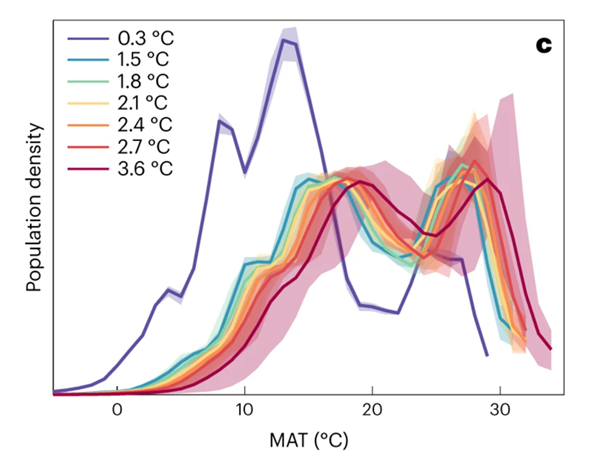
Projected population density with respect to MAT for a future world of 9.5 billion people under different levels of global warming (1.5, 1.8, 2.1, 2.4, 2.7 and 3.6 °C),
contrasted with the reference distribution (0.3 °C, 1980 population). Data are presented as mean values with the shaded regions corresponding to 5th–95th percentiles.
(Image: Nature Sustainability)
―
How many climate refugees are out there?
―
A. It is challenging to determine the exact count of climate refugees as they are spread scattered all over the world. But the issue of climate refugees is recognized as a critical global issue. International organizations estimate that by 2050, over 1 billion people are at risk of becoming climate refugees. This number was reported in the Ecological Threat Register by the Institute for Economics & Peace (IEP) in September 2018. If this prediction proves to be true, at least 10% of the world’s population will become climate refugees in 2050.
The World Bank published similar findings in its publication Groundswell: Preparing for Internal Climate Migration in 2018. Without concrete climate and development action, over 143 million people could be forced to migrate within their own country by 2050 and become internally displaced.
The situation has become more dire in the recent years. According to the 2023 Global Report on Internal Displacement published by the Internal Displacement Monitoring Centre (IDMC), the number of internal displacements that took place in year 2022 alone is 32.6 million, marking a 41% increase from 10 years ago.
The same report finds that 71.1 million people were internally displaced because of natural disasters or war and conflict at the end of 2022. Among them, more people were displaced by natural disasters reaching 53% (32.6 million) of all refugees, compared to 28.3 million people displaced by conflict and violence.
The following map shows the scale of refugees internally displaced by natural disasters and war in 2022. Despite a 60% spike in the number of war refugees due to Russia’s invasion of Ukraine and the civil war in the Democratic Republic of Congo, you can clearly see that there are more climate refugees (blue circles) than war refugees (orange circles). This data suggests that climate change could have a greater impact on human life than war in the future.
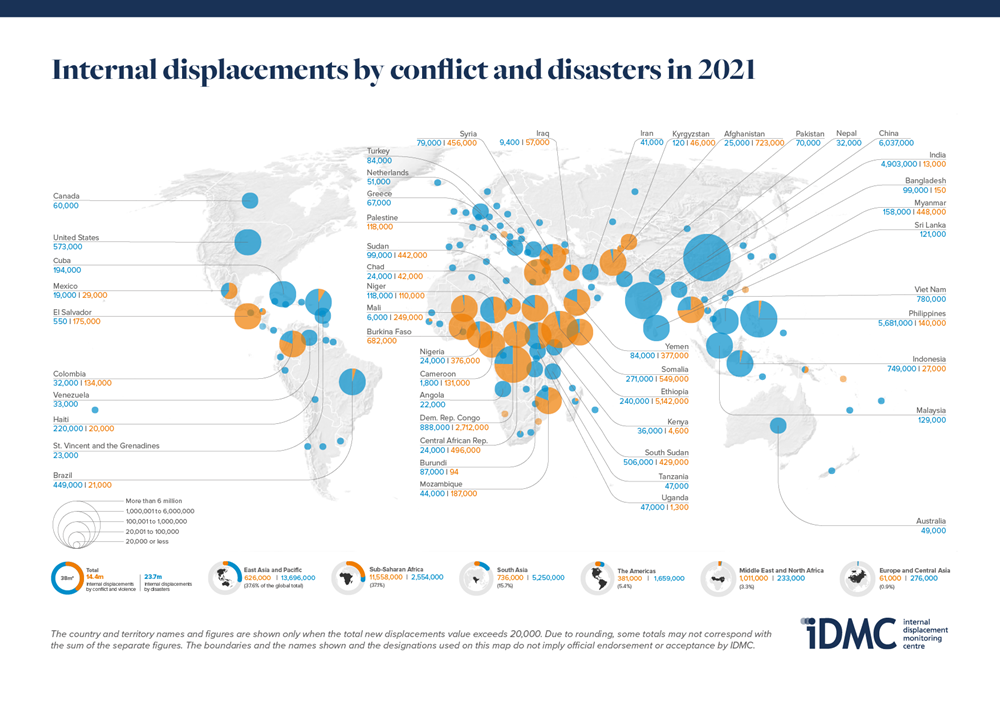
Internal displacements by conflict and disaster in 2022. Climate refugees in blue and war refugees in orange.
(source: GRID 2023)
―
What causes climate refugees?
―
The major reason behind why people become climate refugees is global warming, which is caused by human activities that harm the Earth. Climate change causes droughts, floods, strong winds, and rising sea levels, resulting in poor harvests, food shortages, and ecosystem changes in certain areas.
In 2022, 98% of climate refugees were displaced by disasters caused by climate change, including floods, droughts, and wildfires.
FLOOD
In the past year alone, an estimated 19.22 million people were displaced by floods, which accounts for six out of every 10 climate refugees. Over the past three years, the ongoing La Niña phenomenon, in which water temperatures in the eastern Pacific Ocean are more than half a degree Celsius cooler than normal, has caused massive flooding in places like Pakistan, Nigeria, and Brazil.
DROUGHT
Meanwhile, on the other side of the world, drought is causing waves of refugees. In northeastern Africa, which includes Somalia, Ethiopia, and Kenya, an estimated 2.2 million people have fled their homes due to a severe drought where there was very little rainfall during the rainy season for six consecutive years.
RISING SEA LEVELS
Global warming is causing sea levels to rise due to the melting of glaciers and icebergs. Rising sea levels increase the risk to coastal areas and can cause coastal erosion, and some islands or low-lying areas may disappear permanently. This will force residents of these areas to migrate in search of new places to live.
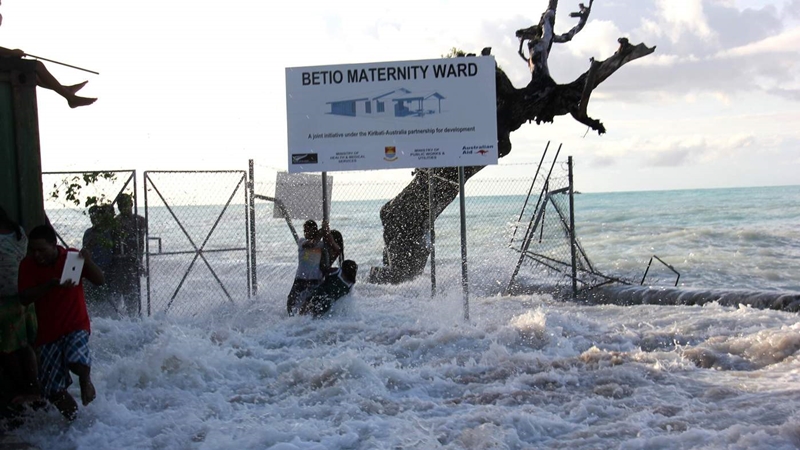
(Picture: CLIMATE.GOV.KI)
Residents of South Pacific Island nations such as Fiji, Tuvalu, and Kiribati are at risk of becoming climate refugees, as rising sea levels threaten to submerge the countries themselves.
FOOD SHORTAGES
Climate change affects crop yields. Changes in climatic conditions can reduce productivity and cause food shortages. Food shortages particularly affect people in poorer regions and lead to mass migration for survival.
―
Climate change causes war
―
Climate risks are interconnected and can cause a domino effect. According to the United Nations High Commissioner for Refugees (UNHCR) report Global Trends in Forced Migration 2020, 95% of all conflict displacements in 2020 occurred in countries that are vulnerable or highly vulnerable to climate change.
For example, as temperatures rise in certain regions, the amount of water available decreases and water quality decreases. Less available water leads to crop failure, reducing income and food supply, and contaminated water spreads disease. When hunger and disease overlap, and stable livelihoods are destroyed, conflict increases.
Syria is a prime example. Between 2006 and 2010, Syria's previously fertile farmlands became deserted, causing crop yields to plummet and 85% of livestock to die. As food prices soared, 10,000 rural workers migrated to cities to find work, and those facing poverty in the cities became easy targets for Islamic State (IS) recruiters.
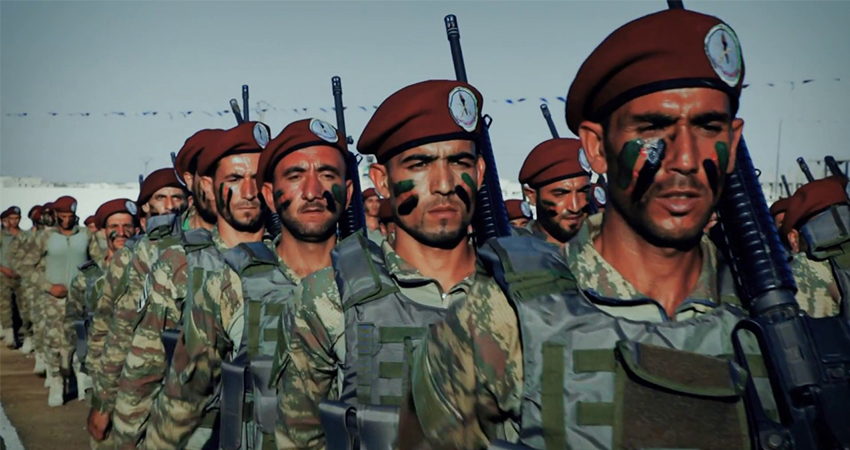
Screenshot of promotional video to recruit Syrian mercenaries
(Image : Syrians for Truth and Justice)
Of course, these are not the only factors that led to the Syrian civil war, but the social problems caused by climate change have contributed to exacerbating existing tensions. The result is a conflict that has sparked the world's worst refugee crisis in decades, forcing an estimated 60,000 Syrians - roughly one-sixth of the population - to flee their country.
And it's not just Syria: conflict zones like Afghanistan, Somalia, Mali, and Yemen are experiencing compounded crises due to increased climate risks. With such a strong correlation between "countries most vulnerable to climate change" and "countries experiencing conflict or violence," we need to be proactive in addressing climate change as a potential seed for international conflict.
―
How to help climate refugees
―
What can you do to help our global community suffering from climate change?
Become interested in climate refugees
You can start by raising awareness and sharing information about the issue of climate refugees. You can start by educating those around you about the impacts of climate change and the situation of climate refugees, as well as educating and promoting action and solutions.
Join a campaign to help climate refugees
Climate refugees need a variety of humanitarian assistance, including housing, food, healthcare, and education. You can join the campaigns of various international organizations, non-governmental organizations, and voluntary organizations working on behalf of climate refugees to help provide them with the support they need.
Put pressure on governments, international organizations, and companies
Climate refugees are a global issue that requires cooperation between countries and international collaboration. The power of a single citizen is small, but collectively, we can put pressure on governments, international organizations, and corporations to address climate change and strengthen policies and funding for climate refugees.
Addressing climate refugees, especially in less developed countries, requires financial and technical assistance at the international level, and we can put pressure on governments, international organizations, and companies to fund and build infrastructure to assist in the migration and resettlement of climate refugees, and to support the development and deployment of climate change adaptation technologies.
In conclusion, the issue of climate refugees presents a pressing and complex challenge that demands our attention and action. The impacts of climate change, including extreme weather events, rising sea levels, droughts, and food shortages, are displacing millions of people worldwide. As the number of climate refugees continues to rise, we must recognize their plight and work together to address the underlying causes of climate change, support vulnerable communities, and implement sustainable solutions. By fostering global cooperation, raising awareness, and advocating for meaningful change, we can strive towards a future where no one is forced to leave their homes due to the adverse effects of a changing climate. Together, we can build a more resilient and compassionate world for present and future generations.
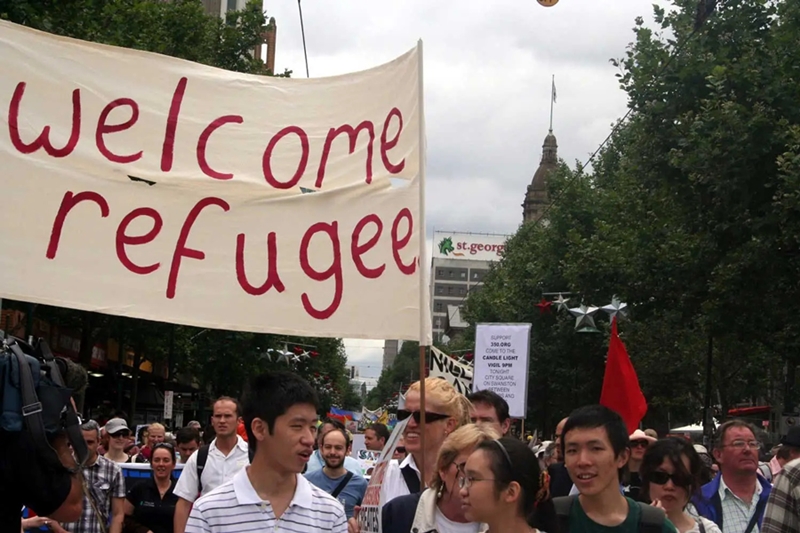
“In a sense, climate change is perhaps a war between the rich and the poor.
It's the rich that are deriving the benefits, it's the poor that are paying the price.”
Anote Tong, former President of Kiribati
Sunhak Peace Prize Laureate
Find out more about climate issues: One Hundred Million Refugees Around the Globe The Horn of Africa suffers its worst drought ever (Video) Who are Climate Refugees? |
Written by Sharon Choi
Director of Planning
Sunhak Peace Prize Secretariat
Translated by Hyang Oh

